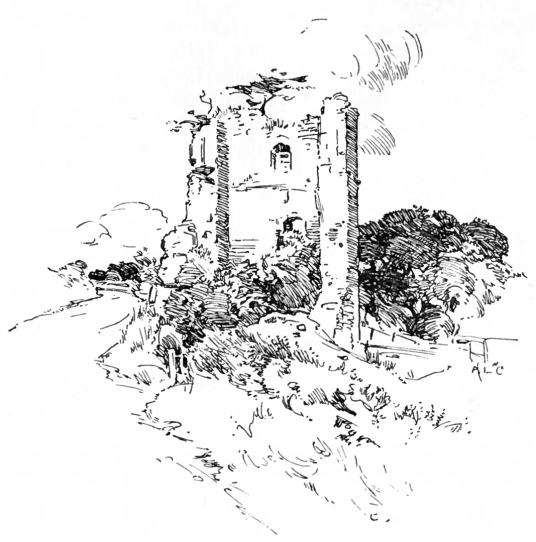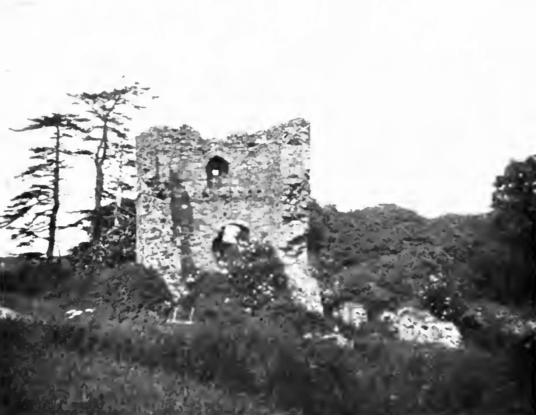Cockburnspath Castle
Borders: About 1 mile south of Cockburnspath, on minor road north of A1, just east of the Heriot Water, at Cockburnspath Castle.
Ruin or site NT 785699 OS: 67 TD13 5YU
Cockburnspath was a property of the Cospatrick Earls of Dunbar and March, but they were forfeited the fortalice of Cockburnspath is mentioned in charter of 1487 annexing the earldom to the Crown. The lordship of Cockburnspath was one of the properties in a charter of 1504 to Margaret Tudor, wife of James IV, in fulfilment of her marriage treaty.
Cockburnspath passed to the Homes, then to the Sinclairs, who in 1546 sold it to the Douglases, although they may have held it from 1528 or earlier as the house of Cockburspath is mentioned in a 1528 proceeding regarding a protest against the process of forfeiture against the Douglases. The late David Douglas of Cockburnspath is mentioned in a ratification for James Douglas, Earl of Morton, in 1567. In a summons of treason of 1584 against the Douglases and others the place of Cockburnspath is mentioned, and in 1593 the lands were annexed to the Crown. John Arnot had a ratification the following year for the lordship and lands of Cockburnspath.
The tower was probably abandoned sometime in the 17th century, and replaced by Cockburnspath House (see below) in Cockburnspath village.
The Arnots held the property until around 1625, when it passed to the Nicolsons, when the tower, fortalice, houses, buildings, town, mains, copses, woods, mills, multures, fishings, coals, etc, are mentioned in an act of 1633 in favour of Master James Nicolson of Cockburnspath. Sir James Nicolson of Cockburnspath is on record in the 1640s, then Sir William Nicolson of Cockburnspath in 1685.
The lands with the tower, fortalice, etc are mentioned in a ratification of 1695 in favour of Sir John Hall of Dunglass.
Cockburnspath House (Sparrow Castle or Old Manor House)
Borders: In Cockburnspath, to the south of the village, near the A1, at Cockburnspath House
.
Private NT 775710 OS: 67 TD13 5XX
This building replaced Cockburnspath Castle (see above). The Arnots were in possession in around 1625, when it passed to the Nicolsons, and they built a burial aisle at the nearby parish church. The lands with the tower, fortalice, etc are mentioned in a ratification of 1695 in favour of Sir John Hall of Dunglass.
Although abandoned at one time, the building has been restored and reoccupied.
Cockburnspath is an attractive village in a scenic area. Cockburnspath Church [NT 774711], at the centre of the village, is a rectangular building, probably dating from the 16th century, although on an older site. The church has an unusual round tower at one end, dating from about 1650, and a small burial vault at the east end of the church, dating from the 17th century and built by William Arnot in 1614, then used Sir William Nicolson.
The market cross {NT 774711], probably dates to the 16th century, and stands on a stepped plinth, about ten foot tall and is decorated with thistles and roses.
In the 19th century, Scottish painters, including the Glasgow Boys Sir James Guthrie and Edward Arthur Walton, lived here and painted in the surrounding countryside.






















